WHO Nutrient requirements and dietary guidelines website
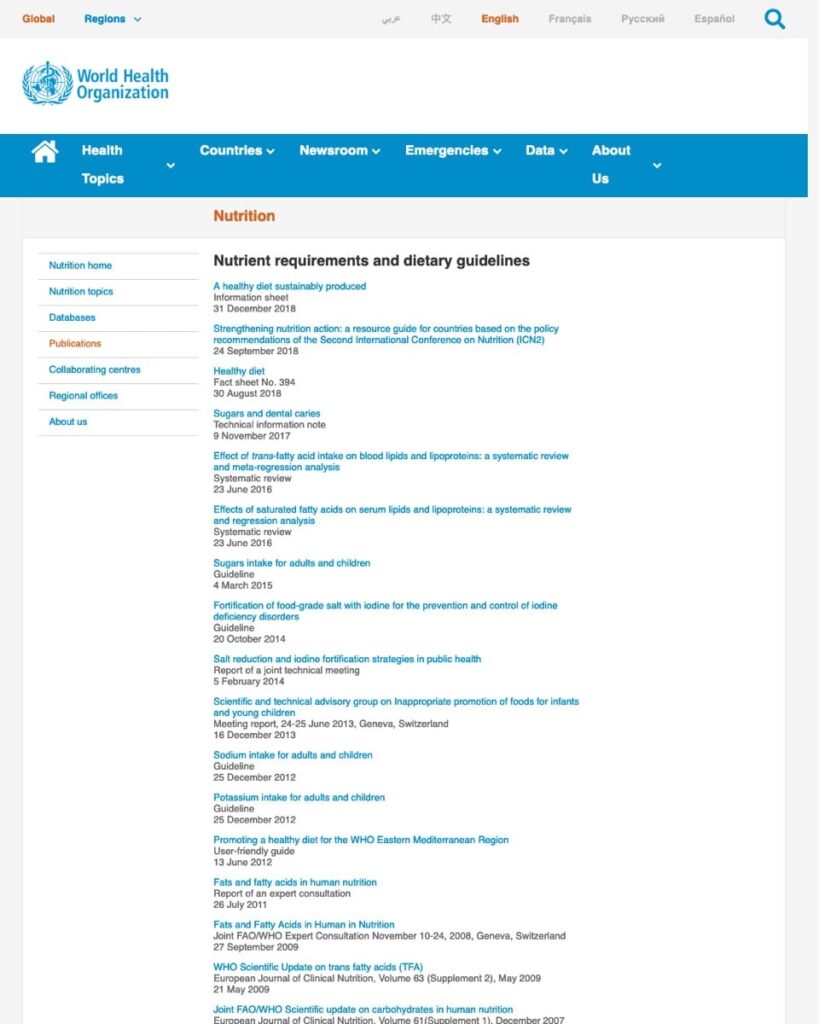
Site includes links to WHO nutrition documents, including Healthy Diet factsheet and guidance on sugars, fats, and sodium.
WHO Nutrient Profile Model for the Western Pacific Region (2016)
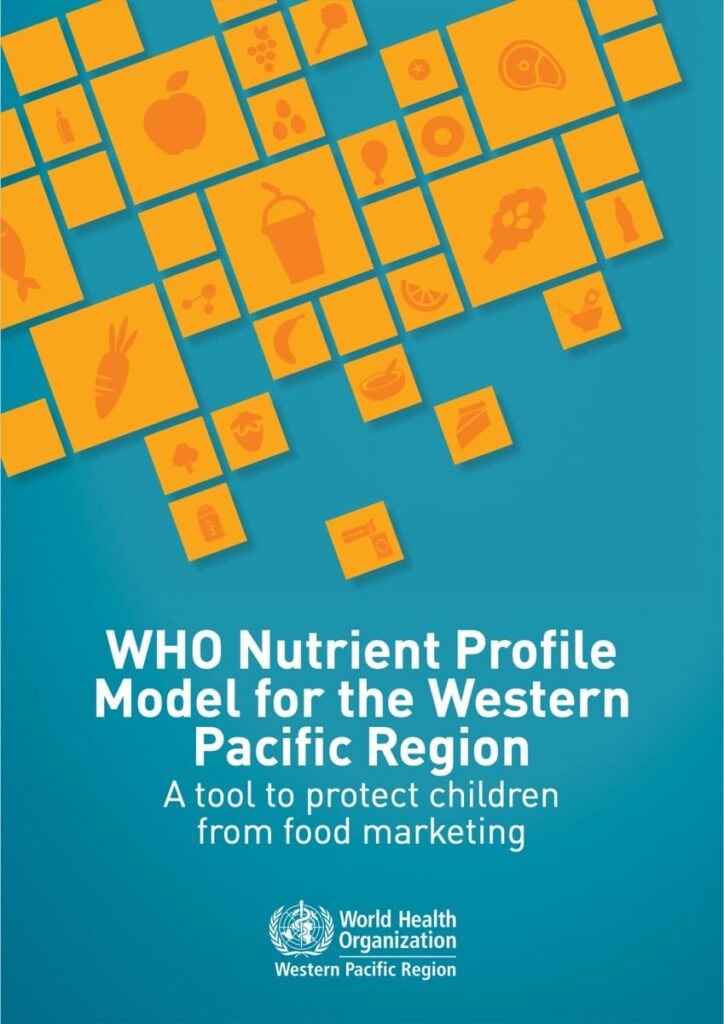
Nutrient thresholds used to implement the set of recommendations on the marketing of foods and non-alcoholic beverages to children.
WHO Nutrient Profile Model for South-East Asia Region (2017)
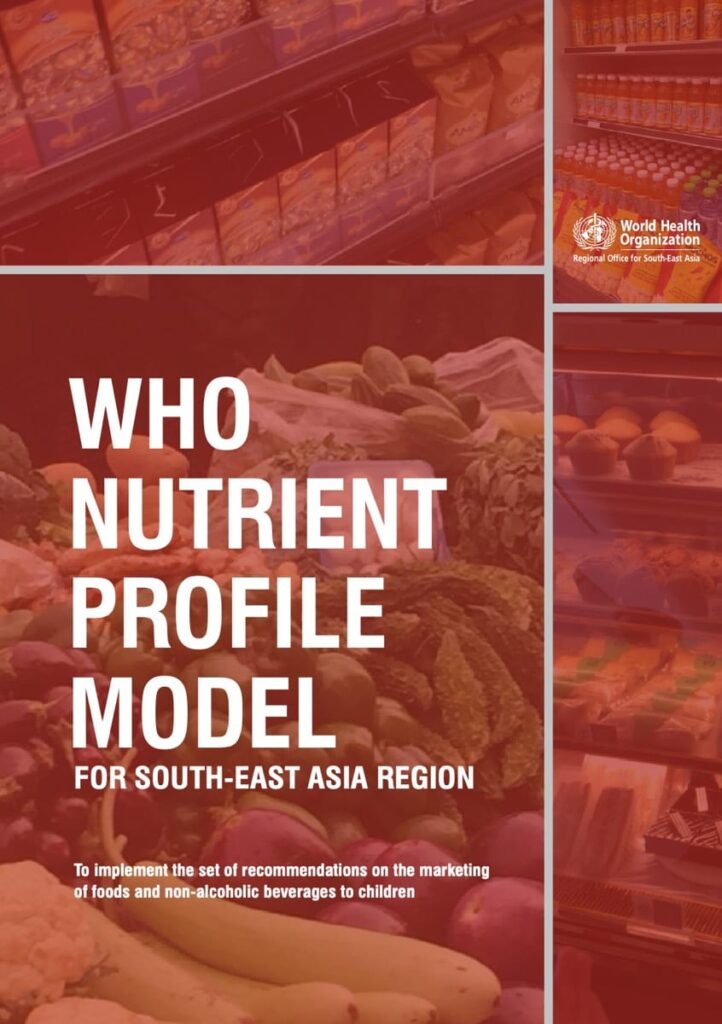
Nutrient thresholds used to implement the set of recommendations on the marketing of foods and non-alcoholic beverages to children.
Global Strategy on Diet, Physical Activity and Health: A Framework to Monitor and Evaluate Implementation
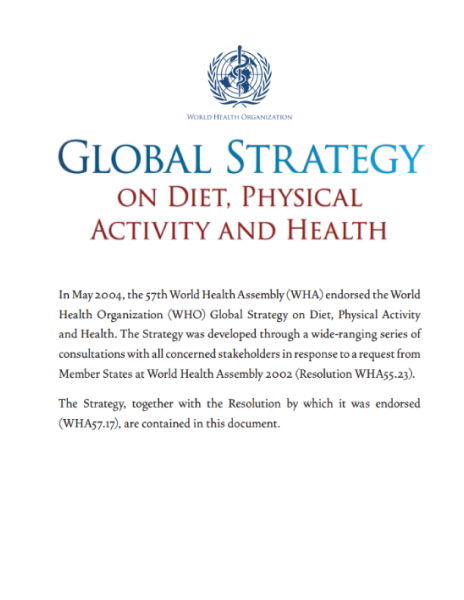
Describes how to measure the implementation of the WHO Global Strategy on Diet, Physical Activity, and Health at the country level and proposes a framework and indicators (Logic model, page 5).
WHO Nutrient Profile Model for the African Region (2019)
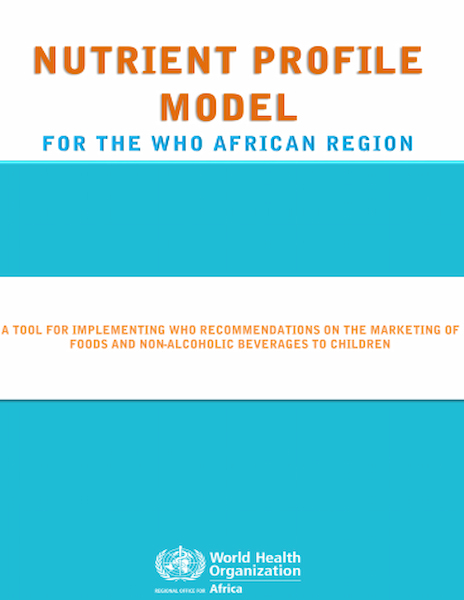
Nutrient thresholds used to implement the set of recommendations on the marketing of foods and non-alcoholic beverages to children.
WHO 5 keys to a healthy diet
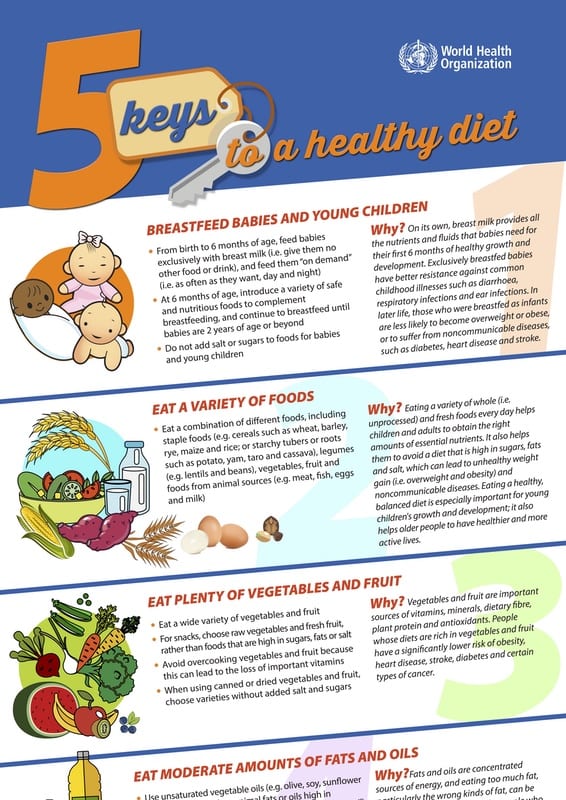
Describes five key elements of a healthy diet.
Healthy School Toolkit (2008)
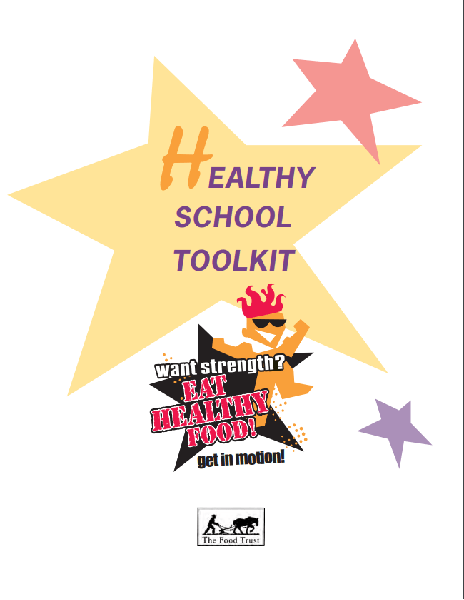
Describes how healthier changes were successfully made in a group of Philadelphia schools and includes specific nutrition standards.
The Hospital Food Standards Panel’s report on standards for food and drink in NHS hospitals (2014)
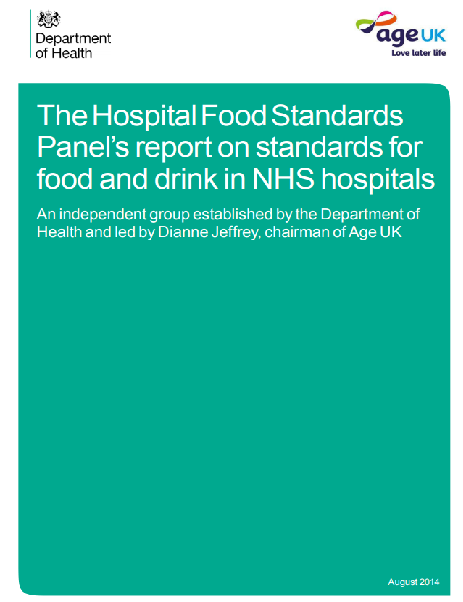
Report on existing hospital food standards, with recommendations on monitoring and further action.
What Works Well Recipe Hub website
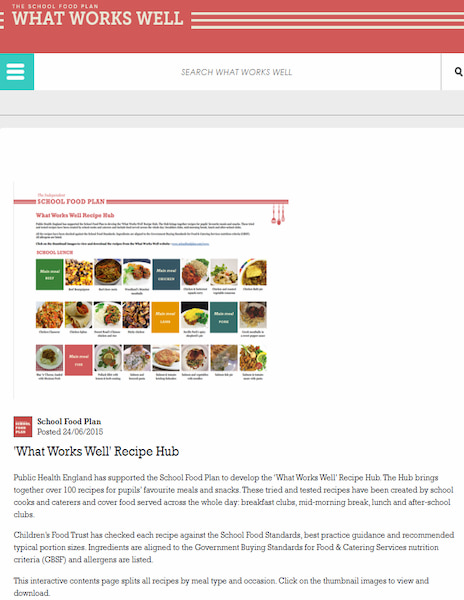
Collection of over 100 recipes that meet the UK’s Government Buying Standards and are suitable for children.
Sustainable Healthy Diets – Guiding Principles (2019)
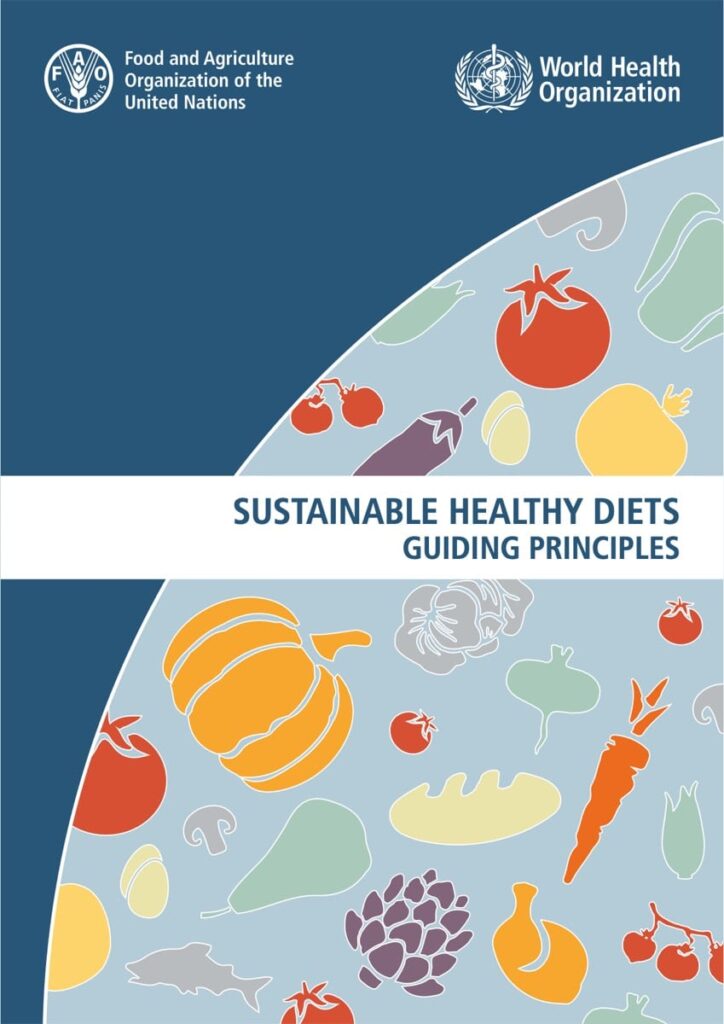
Guidance on what constitutes sustainable healthy diets.
Sustainable procurement: the Official Government Buying Standards (GBS) for food and catering services
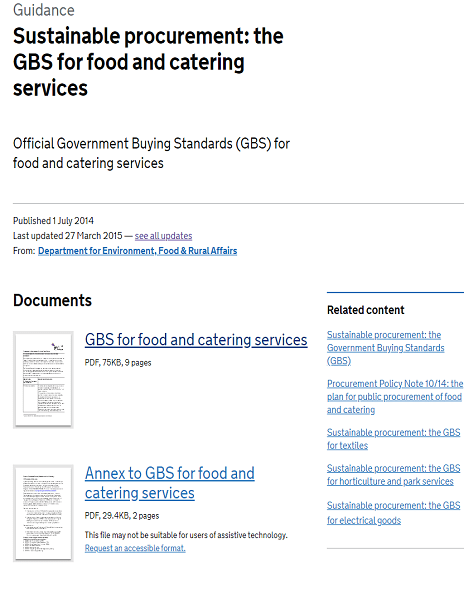
Mandatory product specifications for government agencies; also see: A Plan for Public Procurement: Food & Catering Balanced scorecard (nutrition criteria, page 17).
Strengthening sector policies for better food security and nutrition results: Public food procurement (2018)
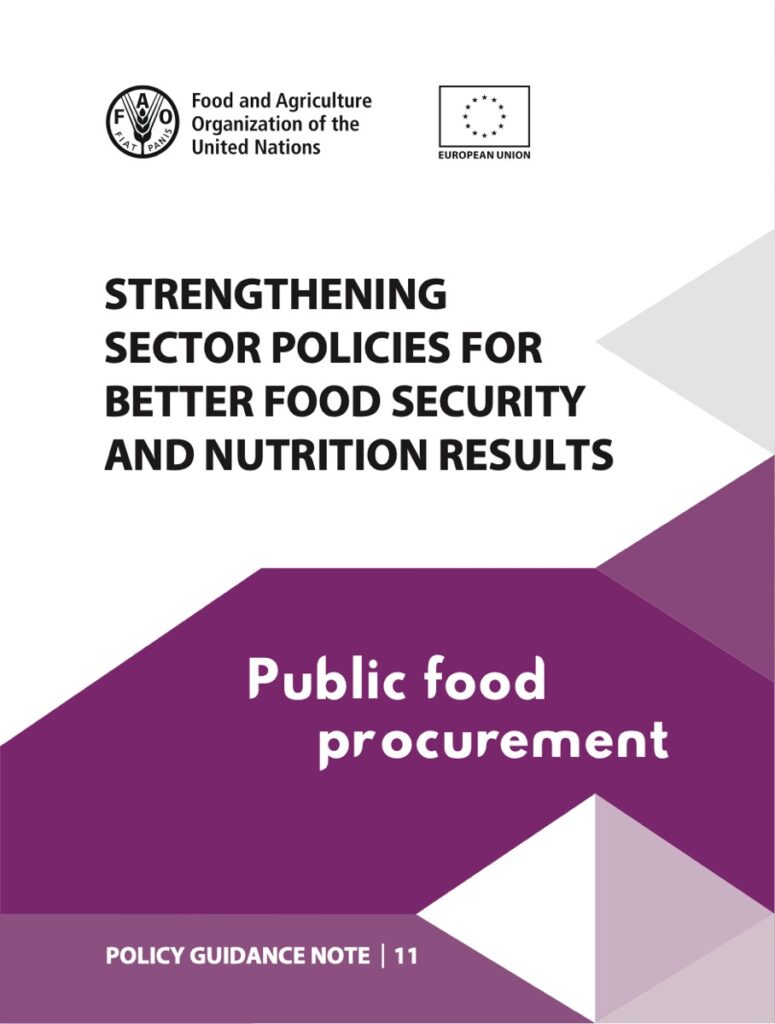
Part of a series to help policy makers address national food security and nutrition issues; guidance is focused on developing initiatives that support food purchases from small farms.
South Korea Special Act on the Safety Management of Children’s Dietary Life
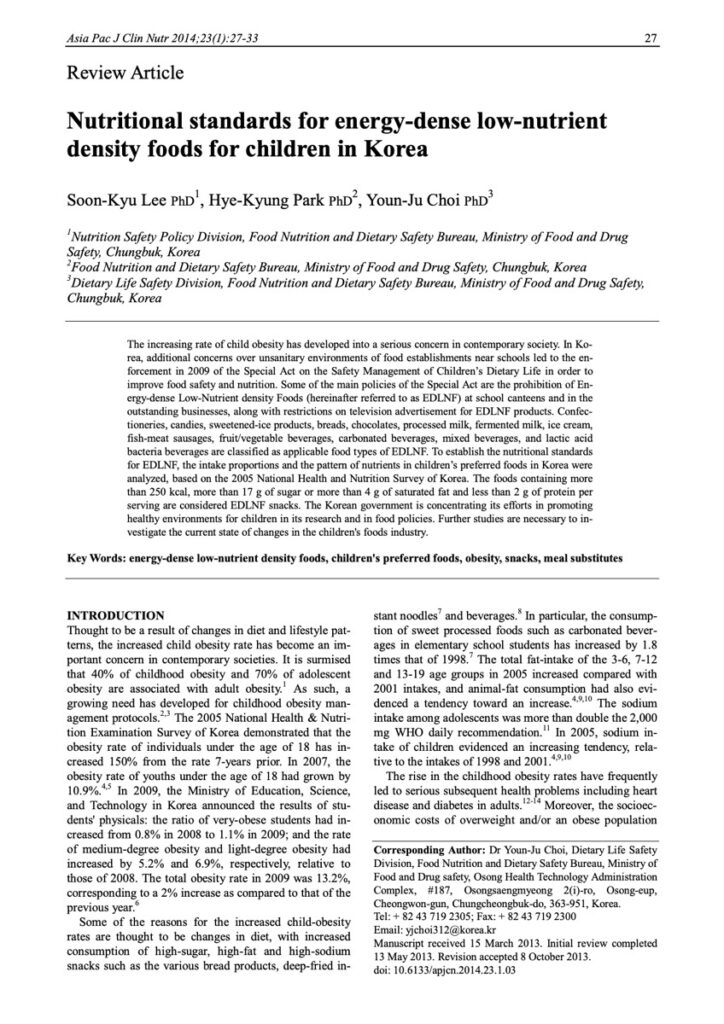
Describes nutrition standards for schools. Scientific article on implementation of nutrition standards: Lee SK, Park HK, et al. Nutritional standards for energy-dense low-nutrient density foods for children in Korea. Asia Pac J Clin Nutr 2014;23(1):27-33.
Strengthening School Feeding Programmes (2019)
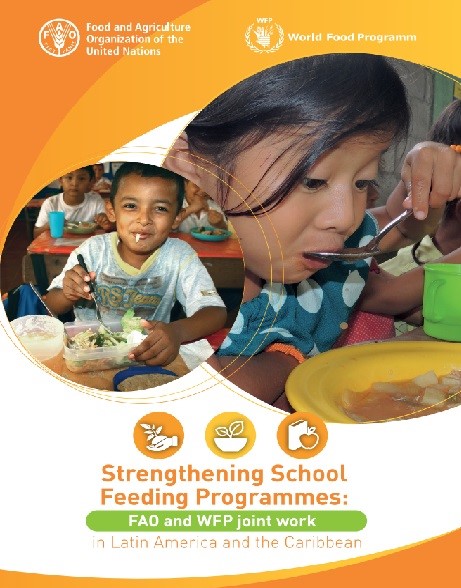
Describes joint work to support school feeding programs in Latin America and the Caribbean. Available in Spanish.
SNAP Ed Toolkit – Healthy Nutrition Guidelines for LA County website
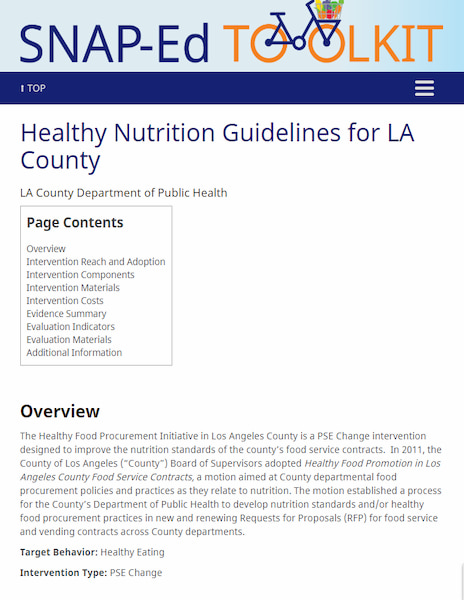
Resources to support implementation of healthy food guidelines for county agencies, including evaluation tools, model policies, a vending case study, and guidance for hospitals.
Sodium Reduction in Communities Program (SRCP) Implementation Guide
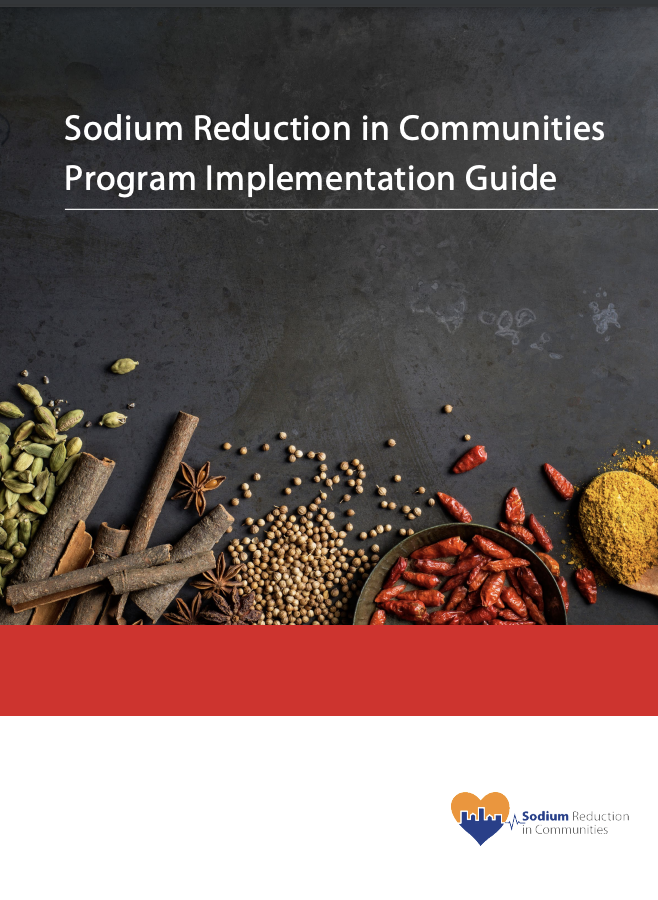
Guide to for food service staff and public health organizations to reduce sodium in food service organizations by drawing upon the experiences gained during the Sodium Reduction in Communities Program (SRCP).
Sodium Reduction in Health-Care Facilities: B.C.’s Experience (2016)

Describes reducing sodium in food service operations in health care facilities owned and operated by B.C. health authorities and lessons learned.
Israel Bans Sugary Drinks, Snacks from School Cafeterias
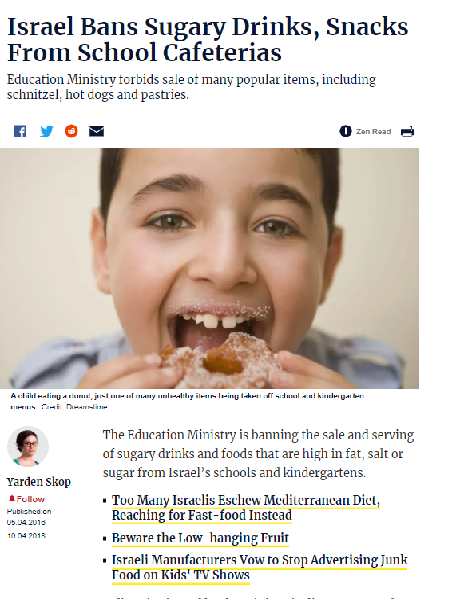
Describes standards to limit sugar, salt, and fat in Israel’s schools and kindergartens.
Smart School Meals: Nutrition Sensitive National Programmes in Latin America and the Caribbean A Review of 16 Countries (2017)
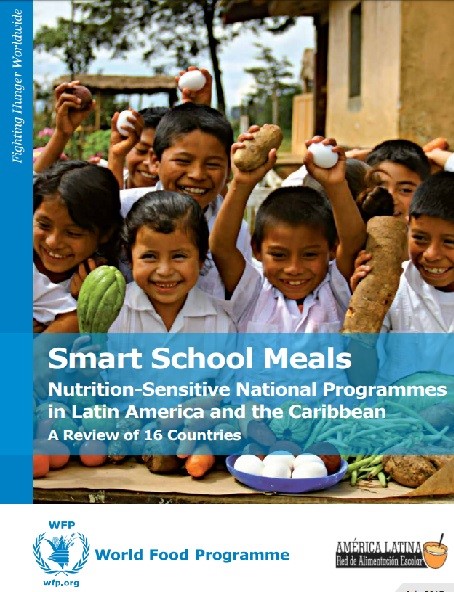
Study of school meals programs in 16 countries, identifying six areas where there are opportunities for improvement. Logic model on page 23.
Seychelles National School Nutrition Policy (2008)
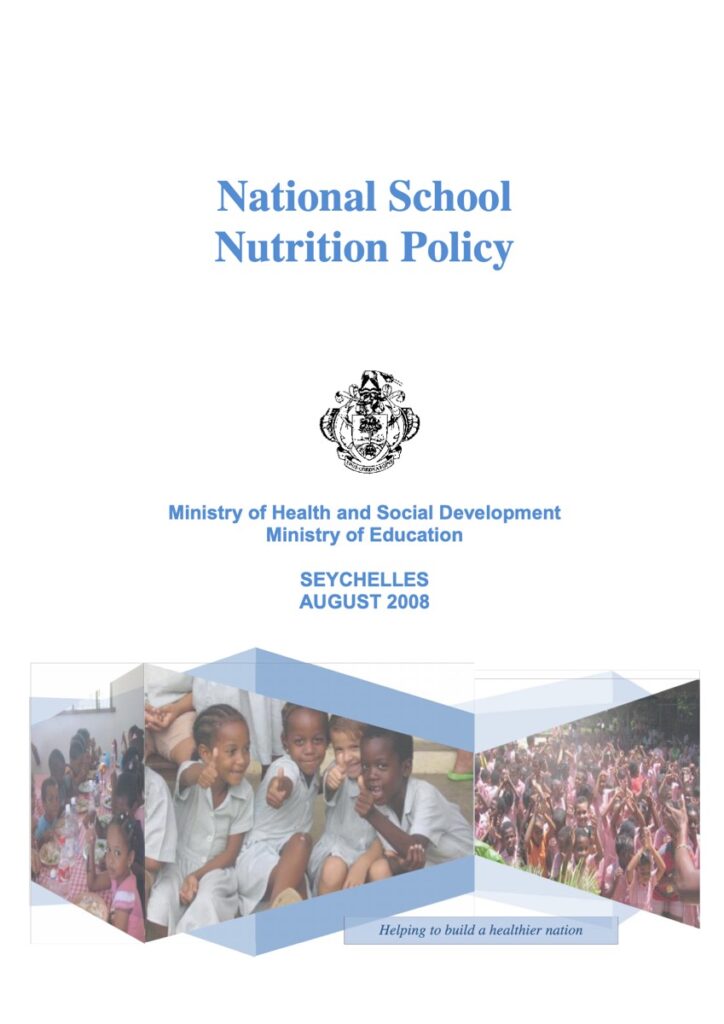
Describes the Seychelles’ efforts to utilize schools as sites for improving the nutritional well-being of all school children. Includes an evaluation tool for schools (page 32).
The Brazilian school feeding programme: an example of an integrated programme in support of food and nutrition security
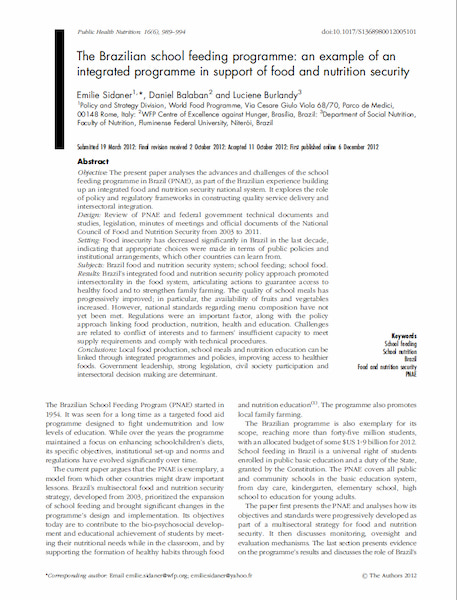
Describes the successes and challenges of the Brazil school feeding program from 2003-2011, finding that local food production, school meals, and nutrition education can be linked and result in improved access to healthier foods.
School Food Plan What Works Well website
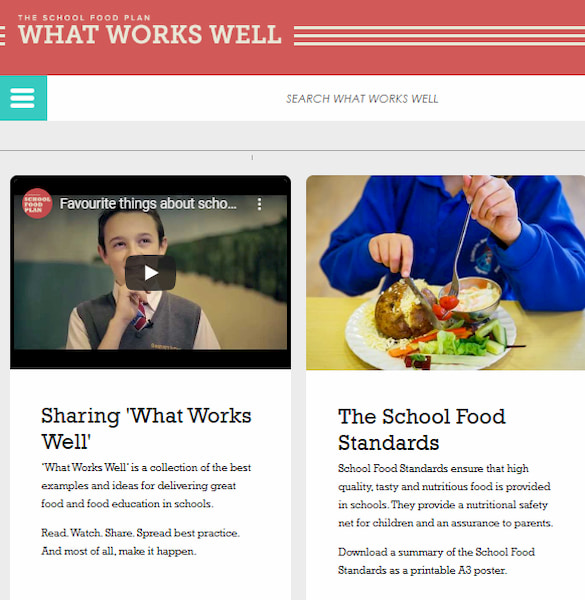
Resources for schools to implement healthier food guidance, including a link to the What Works Well RecipeHub.
School food standards: resources for schools
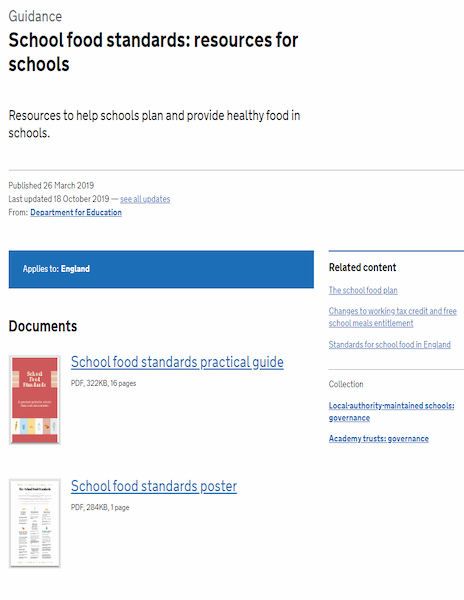
School food standards, with guidance for administrators, a poster example, and a healthy eating checklist.
School policy framework: implementation of the WHO global strategy on diet, physical activity and health (2008)
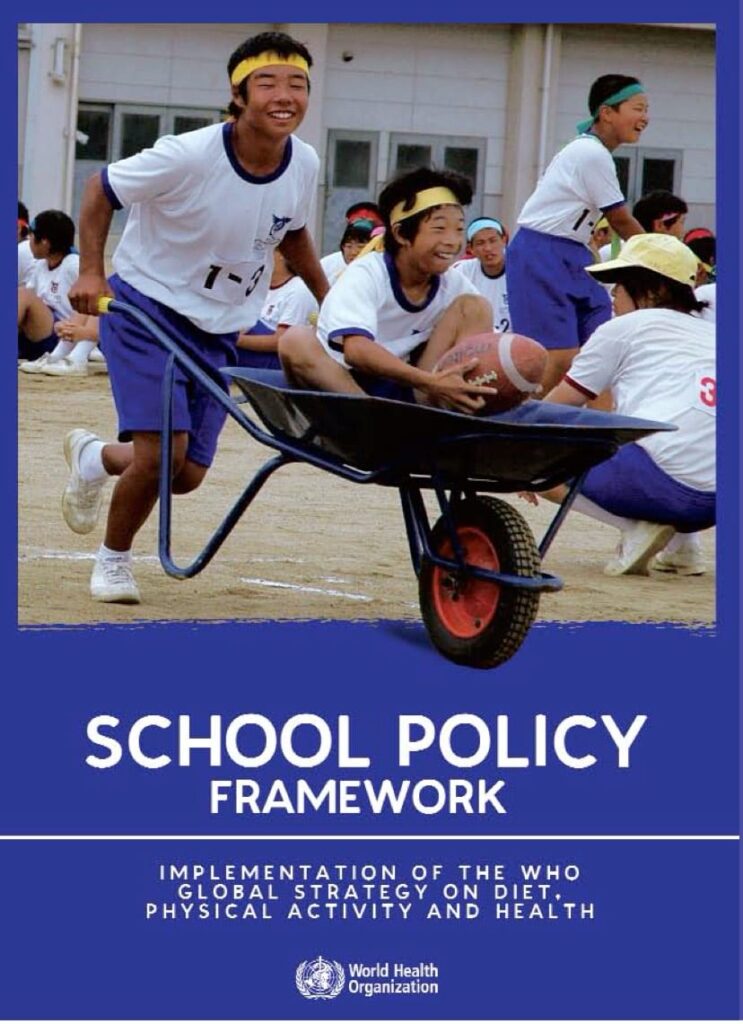
Guide for policy makers at national and sub-national level to promote healthy eating and physical activity in schools settings.
Comparison of Nutrition Standards and Other Recommended Procurement Practices for Improving Institutional Food Offerings in Los Angeles County, 2010–2012.
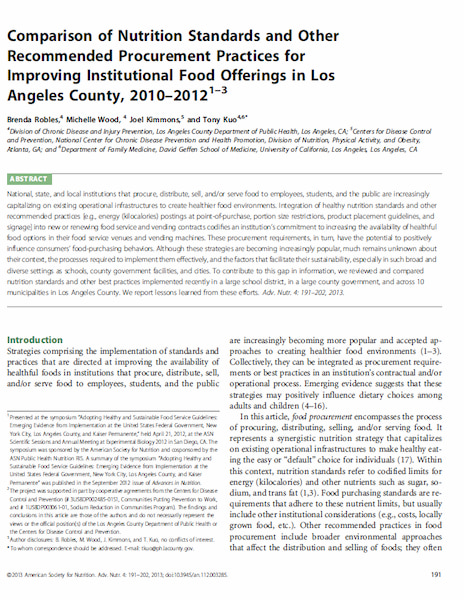
Reviews and compares nutrition standards and other best practices implemented recently in a large school district, in a large county government, and across 10 municipalities in Los Angeles County. Includes a framework for creating healthier food environments and steps to adopting and implementing nutrition standards.
Developing and Applying a Mixed-Methods Evaluation Framework to Build the Business Case for Healthy Food Procurement at the Local Level
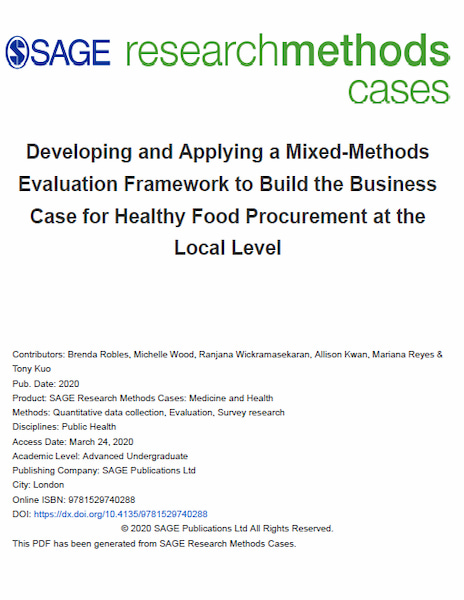
Describes an evaluation by the Los Angeles Department of Health conducted with the goal to help institutional foodservice operators grow their business while also improving the nutritional quality of foods served and sold.
Scaling-up purchase from Africans for Africa (2014)
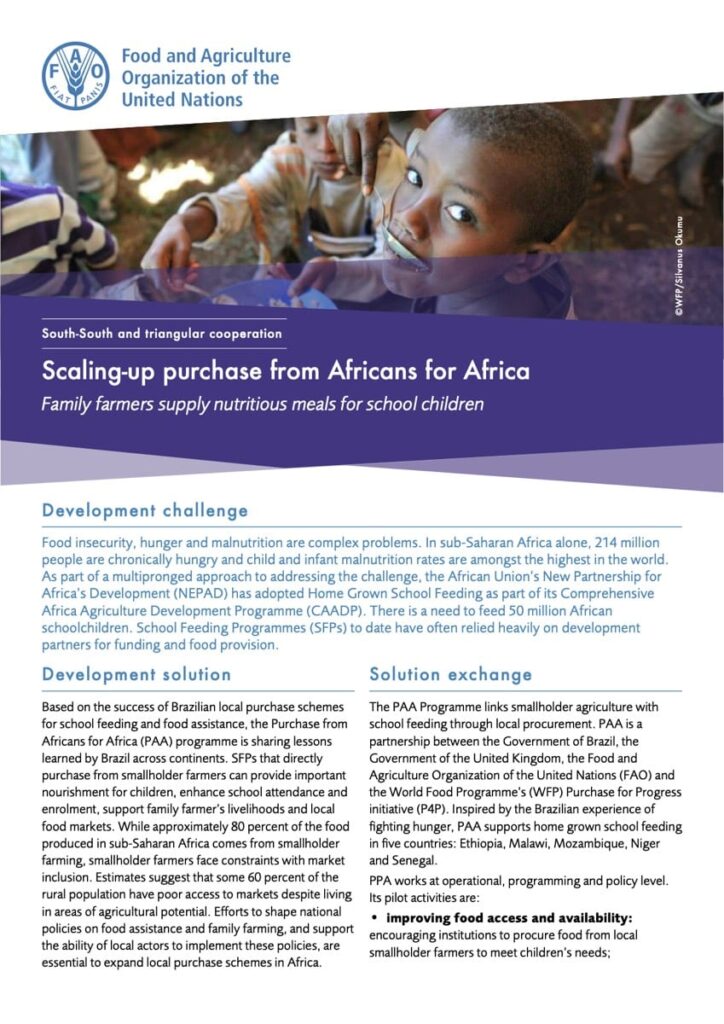
Multi-stakeholder initiative by the FAO, World Food Programme, Brazil and the UK, and the governments of each pilot country: Ethiopia, Malawi, Mozambique, Niger and Senegal, to procure food from small farms for schools.
Implementation lessons for school food policies and marketing restrictions in the Philippines: a qualitative policy analysis.
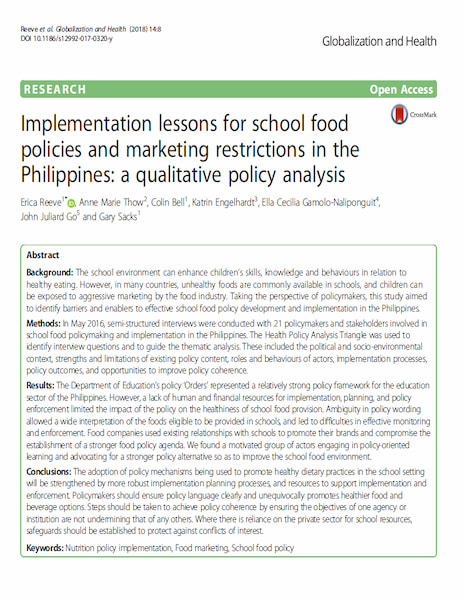
Description of challenges/barriers to consider when implementing procurement policies, particularly within a school setting.
Report of the Commission on Ending Childhood Obesity. Implementation plan: executive summary (2017)
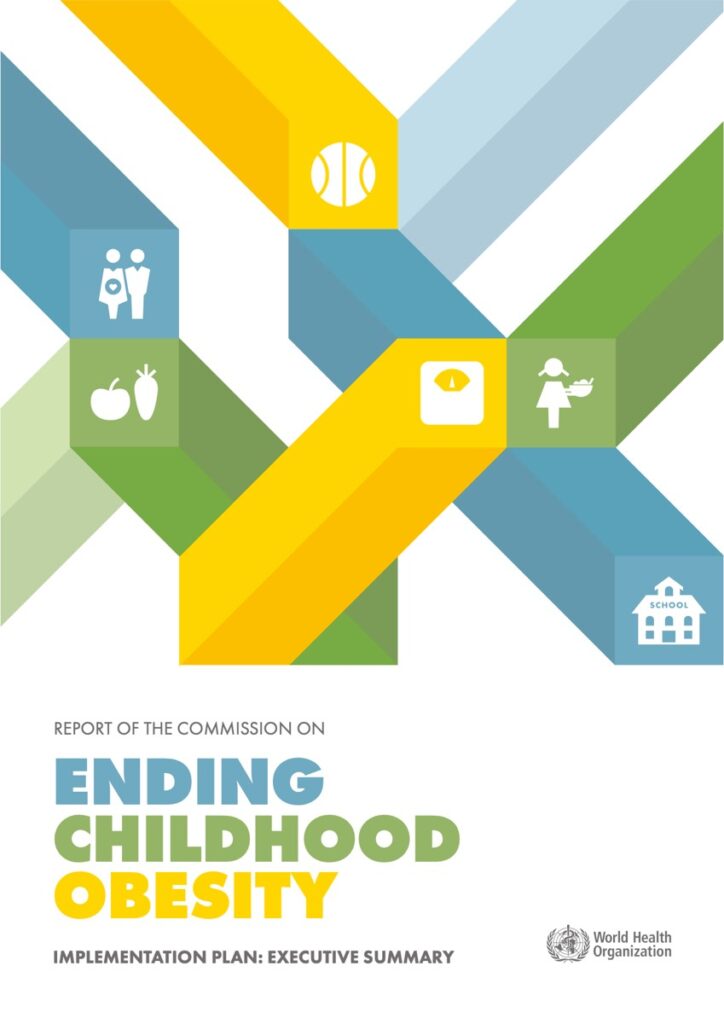
Includes standards (page 18) for food standards for healthy school environments for children and adolescents.
Public Procurement of Food for Health: Technical report on the school setting (2017)
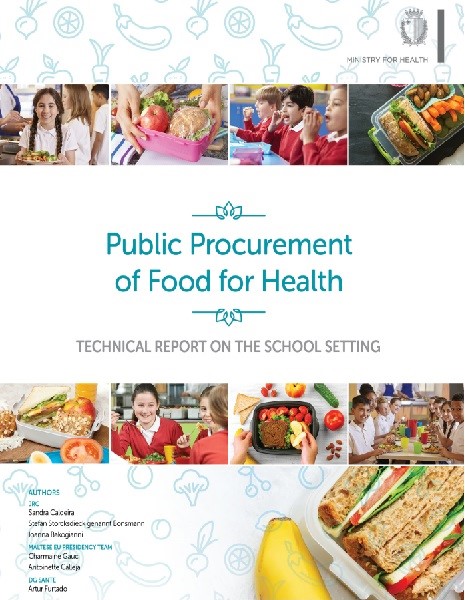
Support for translating national school food standards into food procurement specifications. Includes contract evaluation guidance, scoring grid, and logic model.